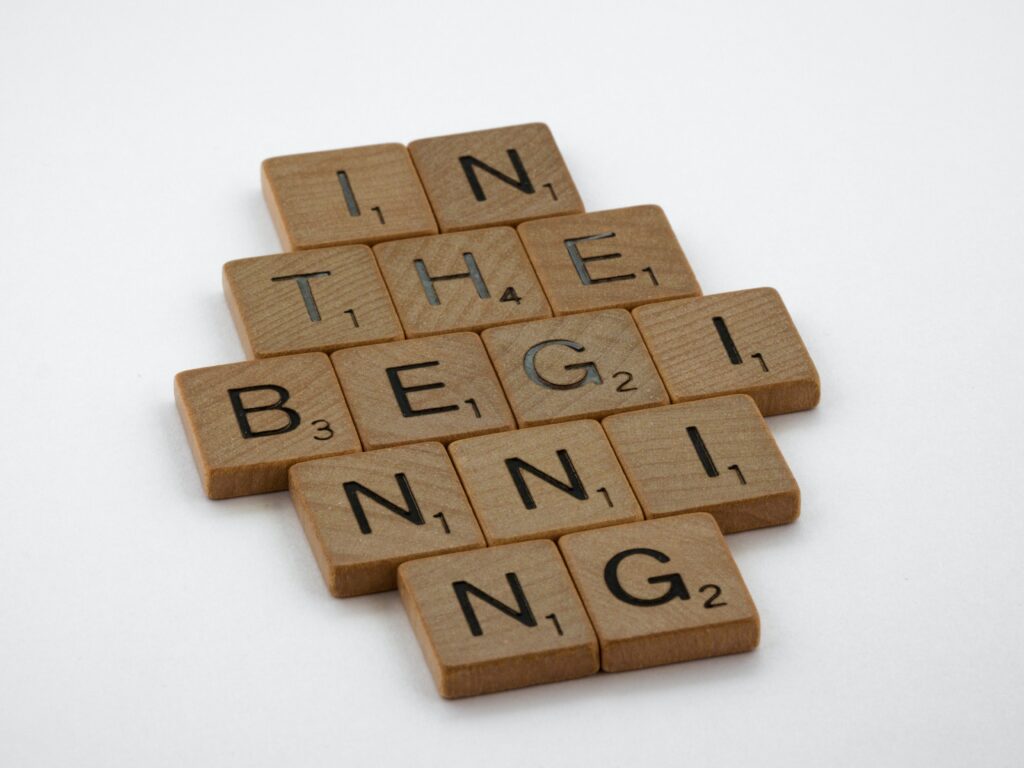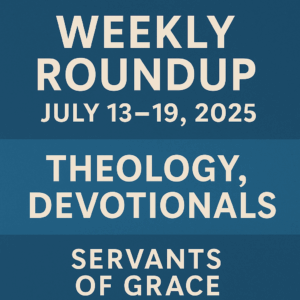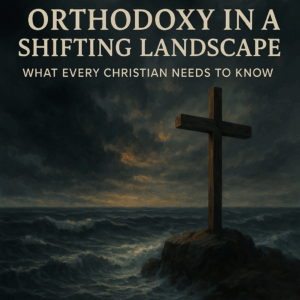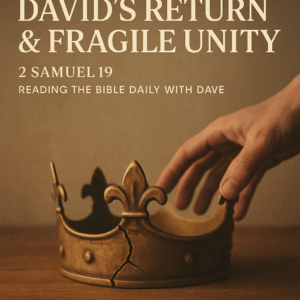⏱️ Estimated Reading Time: 10 min read
What is a human being? Christians answer with some form of “a human being is God’s image bearer.” Being made in God’s image is essential to being human. The image of God is a core concept in Scripture, informing how we treat others (Genesis 9:6; James 3:9) and how we worship God (Romans 1:20). It’s a thread we ought to follow; yet, except for issues around abortion, it wasn’t a core topic for most of my discipleship.
In this article, I want to reflect on the relationship between the image of God, the Fall, and Jesus. Following this Biblical thread helps us reflect on a different dimension of salvation that nourishes our fellowship with God. Let’s start at the beginning.
The Image of God Given to Man
The Genesis narrative has a repeated rhythm in God’s creation of living creatures. The sea creatures, winged creatures, livestock, crawling creatures, and wildlife are all created “according to their kinds” (Genesis 1:20-25). Then, the rhythm changes for humanity. “Then God said, “Let us make man in our image, according to our likeness.”” God made human beings distinct from other creatures by creating them according to His image and likeness, and giving them delegated authority over other creatures (Genesis 1:26).
The climax of Genesis 1 is God creating humanity in His image. Through human beings, all of creation has a visible reflection of God’s character. This gives people a unique responsibility and a privileged relationship.
Work to Do
Unlike the other creatures, God gives men and women work. “They will rule the fish of the sea, the birds of the sky, the livestock, the whole earth, and the creatures that crawl on the earth…God blessed them, and God said to them, ‘Be fruitful, multiply, fill the earth, and subdue it. Rule the fish of the sea, the birds of the sky, and every creature that crawls on the earth’” (Genesis 1:26, 28). To bear God’s image is not like being a statue for spectators to see. Bearing His image comes with responsibility.
We see this play out in Genesis 2, when God places Adam “in the garden of Eden to work it and watch over it” (Genesis 2:16). Adam takes up this work as all the animals come to him to receive their names (Genesis 2:20). There are echoes of this in the story of Noah and the flood. A re-creation story where all the living creatures are given shelter and safety under the care of Noah, God’s image bearer. Being made in the image of God does not give us the right to be proud. It gives us the responsibility to work and watch over God’s creation.
A Relationship to Enjoy
No other creature has the relationship with God that humans have—not even angels. Adam receives life by God’s breath, instruction from God’s Word, and compassion from God’s heart (Genesis 2:9, 15-21). No one else is made in the image of God, and no one else is given the prize of walking with God.
In my discipleship, I’ve heard many definitions of what being made in God’s image means. For some, it is the rational faculty, for others it is the authority over animals, while others spotlight the dignity of human beings. One piece that I think was underplayed for me, however, is the relational element. We can walk with God, in a real and loving relationship, because He made us in His image.
The image Tarnished
Genesis 1 and 2 are beautiful, but far from the reality we wake up to every day. Our world doesn’t make sense without Genesis 3. In Genesis 2 everything is good. Adam is doing his work and enjoying his relationship with God, but everything changes in the next chapter. Instead of being content with bearing God’s image, Adam and Eve believe the serpent’s lie and attempt to become gods themselves. After their fall, everything breaks (Genesis 3:1-9). Our world has both glimmers of the goodness of Genesis 1-2, and the thorns of Genesis 3.
The punishment and consequences of the Fall directly relate to the image of God. The responsibility of working and subduing creation still exists, but now the ground fights back. Work comes with pain. Being fruitful now comes with the labor pains of childbirth. The punishment of death and separation from God make walking with Him impossible. A pride-induced desire to become God tarnished the image of God in man. Like Adam, his descendants now hide from God rather than draw near to Him (Genesis 3:10).
This tarnishing ripples through Biblical history. The Psalmist describes Israel’s sin-filled worship during Moses’ lifetime as an image exchange. “They exchanged their glory, for the image of a grass-eating ox” (Psalm 106:20). They forget God and become like other creatures. God anointed King Saul and, like Adam, gave him a mission to accomplish. Yet Saul, like Adam, disobeyed and rebelled against God (1 Samuel 15:17-23). The cycle continues through the prophets as people choose pride and idolatry instead of loving justice and walking humbly with God (Amos 4; Micah 6:8).
Like a torn painting, humanity still retains the image of God, but it’s been corrupted. J. I. Packer has a good explanation of what happens to the image of God after the Fall: “The Fall diminished God’s image not only in Adam and Eve but in all their descendants, that is, the whole human race. We retain the image structurally, in the sense that our humanity is intact, but not functionally, for we are now sin’s slaves and unable to use our powers to mirror God’s holiness.”[i]
The pinpricks of light reminding us of the goodness of our original state also remind us of what was lost and force us to look to God for restoration.
Jesus: The Perfect Image
In Colossians 1:15, Paul describes Jesus as “the image of the invisible God.” Jesus is the exact representation of God because He is God. In that same section, Paul makes it clear that Jesus is the Creator, Sustainer, and Savior of all things, which only makes sense because He is God (Colossians 1:16-20). When we look to Jesus, we see the image of God in perfection.
What does this have to do with us? Why does it matter that Jesus is “the image of the invisible God”? It matters because, in salvation, the image of God is restored in man by the perfect image of God—Jesus Christ.
“What then was God to do?” asks Athanasius, “Or what was to be done save the renewing of that which was in God’s image, so that by it men might once more be able to know Him? But how could this have come to pass save by the presence of the very Image of God, our Lord Jesus Christ? For by men’s means it was impossible, since they are but made after an image; nor by angels either, for not even they are (God’s) images. Whence the Word of God came in His own person, that, as He was the Image of the Father, He might be able to create afresh the man after the image.”[ii]
Athanasius doesn’t pull this out of nowhere. This idea is grounded in the New Testament. Hebrews connects our cleansing from sin to Jesus as the perfect representation of God. “The Son is the radiance of God’s glory and the exact expression of his nature, sustaining all things by his powerful word. After making purification for sins, he sat down at the right hand of the Majesty on high” (Hebrews 1:3). Paul does likewise in Colossians: “He is the image of the invisible God, the firstborn over all creation… For God was pleased to have all his fullness dwell in him, and through him to reconcile everything to himself, whether things on earth or things in heaven, by making peace through his blood, shed on the cross… now he has reconciled you by his physical body through his death, to present you holy, faultless, and blameless before him” (Colossians 1:15,19-20, 22). Jesus Christ as the image of the invisible God is an important category for understanding what He accomplished as our Savior.
In His substitutionary death, Jesus rescues us from sin’s punishment and cleanses us from it’s poison. This is how Jesus renews the image of God in man, as Stephen Charnock says:
“If the contagion and filth of sin had deformed and sullied our souls as much as before, if our guilt were only removed, we had been freed from punishment, but without restoring the divine image we had not been fit for any converse with God. It was necessary that our souls should be washed, and our faculties put into a state to serve, in some measure, the glory of God and the end of our creation. God would have seemed to deny his own holiness, if he had regarded only the reverence of his justice, by appointing a sacrifice for atonement, and not consulted the honour of the other by renewing his image in the nature of man.”[iii]
Jesus takes on the work of restoring the image of God and succeeds. In Christ alone, we are rescued from sin and made fit for fellowship with God. The work and relationship given to Adam in the creation story are restored to us through Christ. I think this is why Paul refers to the image of God when he talks about the progress of sanctification. “For those he foreknew he also predestined to be conformed to the image of his Son, so that he would be the firstborn among many brothers and sisters” (Romans 8:29). “We all, with unveiled faces, are looking as in a mirror at, the glory of the Lord and are being transformed into the same image from glory to glory; this is from the Lord who is the Spirit” (2 Corinthians 3:18). “You are being renewed in knowledge according to the image of your Creator” (Colossians 3:10). In the gospel story, we see the creation, fall, redemption, and restoration of the image of God.
Conclusion
As a pastor, I’m often reminded that theology is more than theory. Good theology leads to joyful worship and faithful living. I have not given much space for application in this article, so let me close with one.
I wrote this article because I believe understanding the connection between the image of God and salvation in Christ is vital. We are moving closer to a world where people will augment their bodies with computer chips, A.I., and robotics. What a human being is may not be so easy to answer in a few years—at least from a worldly perspective. Therefore, we need our theology to root us in Biblical truth.
The definition of being a human does not change. Understanding the image of God helps us know who we are; and understanding the connection to salvation helps us place our hope in the right place. Bearing the image of God is central to being human and being a Christian. God made us in His image and made us new creations in Christ, and He is renewing us according to His image. Reflecting on the image of God, the Fall, and Jesus Christ equips us to keep our head and flourish as true human beings in a tech saturated world.
[i] J. I. Packer, Concise Theology: A Guide to Historic Christian Beliefs (Wheaton, IL: Tyndale House, 1993), 72–73.
[ii] Athanasius of Alexandria, “On the Incarnation of the Word,” in St. Athanasius: Select Works and Letters, ed. Philip Schaff and Henry Wace, trans. Archibald T. Robertson, vol. 4, A Select Library of the Nicene and Post-Nicene Fathers of the Christian Church, Second Series (New York: Christian Literature Company, 1892), 43.
[iii] Stephen Charnock, Christ Crucified, (Louisville, KY: GLH Publishing, 2017) 13.



